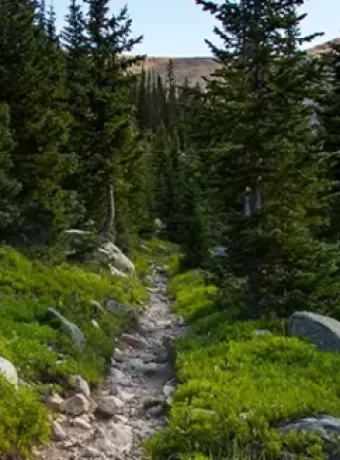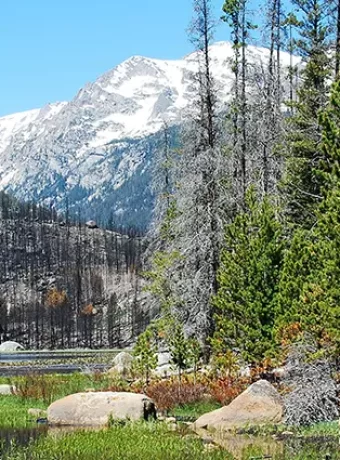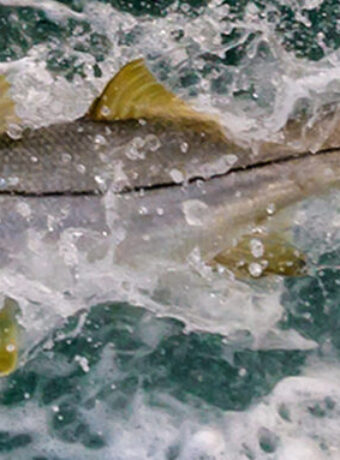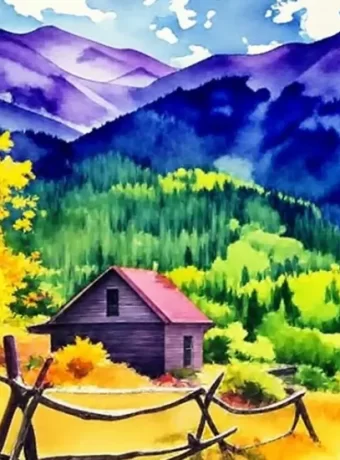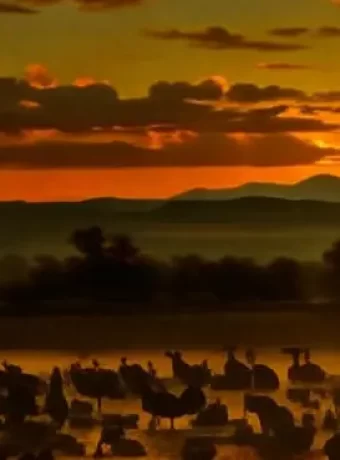Kawuneeche Valley Camping and Trekking A 5-Day Rocky Mountain Romp
Are you ready for an unforgettable adventure? We are talking about the Kawuneeche Valley Camping and Trekking A 5-Day Rocky Mountain Romp. This journey is packed with amazing views and fascinating history from the Rocky Mountain region.
It will give you plenty of outdoor fun in this stunning part of the national park. Think driving over high mountain passes and exploring the vast mountain national landscapes. Imagine hiking to old ghost towns or along numerous hiking trails.
You can cast fishing lines in the Colorado River, a truly rewarding experience. At night, you gaze at the Milky Way, a breathtaking night sky spectacle. This is your chance for a real escape into Kawuneeche Valley Camping and Trekking A 5-Day Rocky Mountain Romp, a highlight of any visit to rocky mountain national.
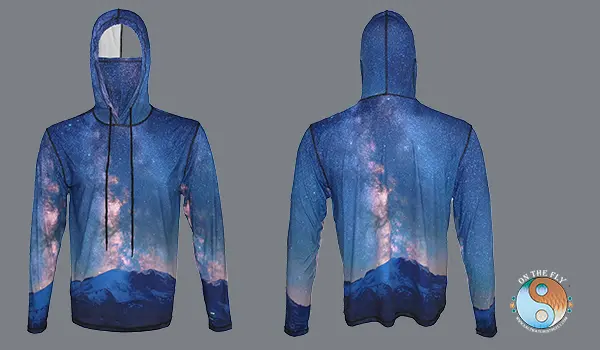
Table of Contents
This itinerary focuses on the quieter, western side of Rocky Mountain National Park, offering a deep immersion into the Kawuneeche Valley’s beauty. Below is a quick overview of the planned hikes, giving you a glimpse of the adventures that await. Remember that conditions in the mountain national park can change, so always check with park rangers for the latest updates.
| Day | Hike Name | Approx. Distance | Approx. Elevation Gain | Difficulty | Highlights |
|---|---|---|---|---|---|
| 1 | Toll Memorial Trail | 1 mile RT | Minimal | Easy | Alpine tundra exploration, pikas, panoramic views from Trail Ridge. |
| 2 | Chasm Falls (roadside) | Short walk | Minimal | Easy | Powerful waterfall along Old Fall River Road. |
| 2 | Coyote Valley Trail | 1 mile loop | Minimal | Easy | Riverside walk, meadows, excellent for wildlife viewing, accessible. |
| 3 | Lulu City & Little Yellowstone | 13.8 miles RT | ~2000 ft | Moderate | Historic ghost town, Colorado River scenery, Continental Divide crossing. |
| 4 | Lake of the Clouds | 14 miles RT | ~2500 ft | Strenuous | Stunning alpine lake, challenging climb, incredible high mountain scenery. |
Day 1: The Great Escape to Kawuneeche Valley
The Drive: Estes Park to Timber Creek Campground
Our journey begins in Estes Park, a lively town serving as a primary gateway to Rocky Mountain National Park. This town has a charm all its own, with streets lined with interesting shops and the sweet smell of fresh taffy often filling the air. You might even see elk casually strolling down the sidewalk, a common sight for Rocky Mountain National Park tourism. But, as lovely as Estes Park is, we’re not lingering; the mountains are calling our names. Grab any last-minute supplies, like snacks or that extra fleece you debated packing; some national park restaurants and shops are available here for those final needs.
Point your car west on US-34, also known as Trail Ridge Road, heading straight for the Fall River Entrance or the Beaver Meadows Entrance of the national park. You will need to pay the park entry fee here or show your annual pass. It’s also important to be aware of the park’s timed entry permit system, which may be required for access during peak seasons; check the official National Park Service website for current requirements before you go. As you drive deeper, the scenery starts to truly impress. Huge mountains rise on either side, and wide meadows stretch out, inviting exploration. This dramatic landscape is precisely why you came to this mountain national destination.
Your first essential stop is Rainbow Curve Overlook, located about 12 miles into the park along the scenic drive of Trail Ridge Road. This spot offers an incredible vista, showcasing the grandeur of the Rocky Mountain National range. The Never Summer Mountains will spread before you, with the Kawuneeche Valley unfurling like a vast, green welcome mat. Take plenty of park photos here and let the crisp mountain air fill your lungs. It’s a brief pause, but this view from the ridge road? It sticks with you.
Next, it’s time to stretch those legs on the Toll Memorial Trail. This is a short, one-mile round-trip hike, just a little farther up Trail Ridge. The trail honors Roger Toll, a past park superintendent who undoubtedly loved his job managing this amazing mountain national park. You’ll wander through the delicate alpine tundra, a fragile ecosystem. Look for colorful wildflowers that seem almost unreal against the stark backdrop, and keep an ear out for the squeak of pikas, small, busy creatures gathering food for winter. The trail is high, around 11,000 feet, so you might feel the altitude; take it easy, walk slowly, and enjoy the stunning landscape.
After your tundra stroll, you will drive down into the Kawuneeche Valley. Trail Ridge Road winds and twists, revealing new, amazing views around every corner. You will pass through forests of tall pine and shimmering aspen trees. Then, the valley opens up, wide and peaceful, a signature characteristic of the Kawuneeche Valley. Your destination for the night is Timber Creek Campground, the main park campground on the park’s west side, and one of the few campgrounds in this part of Rocky Mountain National. It offers 98 sites suitable for both tents and RVs, equipped with picnic tables, fire grates, and access to vault toilets and potable water. Find your site, get your tent pitched, and breathe a sigh of relief; you have officially left the everyday world behind.
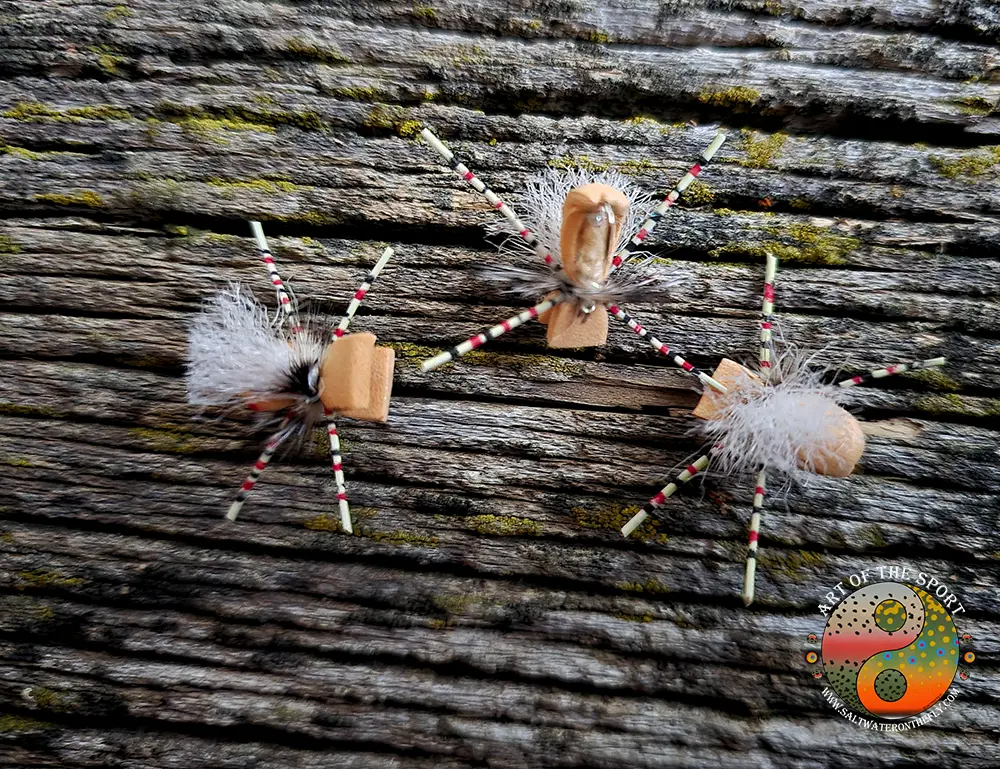
Evening: Fly Fishing and Chasing Sunsets
With your camp comfortably set up, it is time for some fly fishing. The headwaters of the Colorado River are a short walk from Timber Creek Campground. This legendary river starts small here, more like a lively stream, perfect for trying your luck with brown trout, brook trout, and occasionally native cutthroat trout. The water is often clear, and you might spot fish darting among the rocks. Tie on a classic fly like an Elk Hair Caddis, a Parachute Adams, or a small Hare’s ear’s and Pheasant Tail nymph; these are usually good choices for mountain streams in the rocky mountain area. A Colorado fishing license is required for those 16 and older.
Wade carefully into the cool shallows if you choose, or fish from the bank. Feel the current against your legs. Practice your casting rhythm, letting the line drift naturally through promising pools and riffles. Do not worry if you are not an expert; the beauty of the surroundings is half the fun. You might hook into a feisty brook trout or maybe a larger brown trout. Remember to handle any fish gently and release them quickly if you are practicing catch-and-release, which helps protect this delicate ecosystem. Local regulations often mandate barbless hooks, so check current rules.
As the sun begins to set, the Never Summer Mountains are painted in shades of orange, pink, and purple, a spectacular sight for any photographer looking for iconic Rocky Mountain National Park photos. The Kawuneeche Valley glows. Keep your camera handy because local elk and moose often appear in the meadows at dusk, making for magical photo opportunities. After enjoying the fishing and the sunset, head back to camp. It is time for a hearty dinner cooked over your camp stove, perhaps some pasta or grilled sausages. Open a cool drink and toast to your first incredible day in the national park.
Day 2: Trail Ridge Road, Historic Sites, and More Fly Fishing
Morning: Breakfast and Back Over the Divide
Good morning, happy camper. After a camp breakfast, perhaps some instant oatmeal livened up with berries or freshly brewed coffee, it is time for another day of exploration. Today involves driving back over Trail Ridge Road, one of the most famous scenic drives in America, to the park’s east side, then looping back to the west, taking in more sights. Pack your daypack with water, snacks, extra layers, and rain gear, as mountain weather is unpredictable. Your tent can stay put at Timber Creek, your base in the park campground system.
Trail Ridge Road is an experience in itself. As the highest continuous paved road in North America, cresting at over 12,000 feet, it offers non-stop views of the rocky mountain landscape. Your first stop today will be Many Parks Curve Overlook, about 20 miles east from Timber Creek. This viewpoint showcases the park’s eastern valleys. You will see several distinct “parks,” which are large mountain meadows, and prominent peaks like Longs Peak in the distance. The scale of the landscape here is truly awe-inspiring, a testament to the grandeur of Rocky Mountain National.
Old Fall River Road and Alpine Visitor Center
Now for a special detour: Old Fall River Road. This is a one-way, mostly gravel road, offering a different, more historic driving experience compared to the paved Trail Ridge. It is about 11 miles long and climbs from near the Fall River Entrance up to the Alpine Visitor Center. This road, originally built between 1913 and 1920, feels like a step back in time. It is narrower and slower-paced than Trail Ridge Road, which lets you really soak in the scenery of Fall River valley. Make a stop at Chasm Falls, roughly three miles up the road. A short walk leads you to where the Fall River tumbles dramatically through a tight gorge, a powerful display of nature.
The road continues its gentle climb, taking you through cool forests and by lovely meadows. Keep your eyes peeled for wildlife; bighorn sheep are sometimes seen on the rocky slopes, and marmots enjoy sunning themselves on warm rocks. Eventually, you will reach the Alpine Visitor Center, perched at an impressive 11,796 feet. You are now above the treeline, in the realm of the alpine tundra. The views are immense, stretching for miles across the mountain national park. There is a gift shop here, a cafe for a quick bite, and rangers who can answer your questions about this high-altitude world. It can be surprisingly cold and windy, even in summer, so having an extra layer is a good idea. Take some time to learn about tundra ecology from the park’s resources and exhibits; it’s a fragile and fascinating environment.
Afternoon: Farview Curve, Holzwarth Historic Site, and Grand Lake
Back on Trail Ridge Road, begin your westward journey back toward the Kawuneeche Valley. Do not miss a stop at Farview Curve Overlook. As its name suggests, it provides an outstanding view of the Kawuneeche Valley. You will see the Colorado River meandering below like a silver ribbon, carving its path through the valley trail systems. The Never Summer Mountains form a magnificent backdrop. It is another perfect spot for photos and just to marvel at the landscape of Rocky Mountain.
Next, you are going to step into history at the Holzwarth Historic Site. This site is about eight miles north of the town of Grand Lake. Also known as Never Summer Ranch, this homestead was established by German immigrants John and Sophia Holzwarth in the early 1900s. You can walk through several restored cabins and buildings, gaining insight into the Holzwarth historic lifestyle. Imagine what life was like for this family, carving out an existence in such a wild and remote place before it became a part of the national park. The site is a flat, easy half-mile walk from the parking lot, and the surrounding meadow is also excellent habitat for elk, so be watchful.
Continue south to the Grand Lake Entrance and the Kawuneeche Visitor Center. Here, you will find very helpful park rangers. They can give you the latest trail conditions, wildlife sightings, and tips for fly fishing the Colorado River. Do not hesitate to ask any questions you have; they are a great resource for Rocky Mountain National Park information. The visitor center also features a park film, exhibits, and a bookstore where you can pick up a Rocky Mountain National Park map or field guides. It is a good place to orient yourself to the west side of the park if you have not already.
Late Lunch and a Hike
By now, you are probably ready for a late lunch. There are several pleasant picnic areas near the Kawuneeche Visitor Center, such as Harbison Meadows. Find a scenic spot, lay out your blanket, and enjoy your meal amidst the beauty of the valley. After eating, consider a gentle hike on the Coyote Valley Trail. This is a one-mile loop trail along the Coyote Valley that is mostly flat and accessible for many abilities. It follows the Colorado River closely, offering peaceful river views. You will walk through meadows with mountain views all around. It is a wonderful place to spot elk grazing or perhaps an osprey fishing in the river. It is a peaceful, easy way to connect with the valley floor and a great example of a gentle valley trail.

Evening: Fly Fishing and Elk Photography
Back at Timber Creek Campground, it is time for another chance at fly fishing. The evening light in the Kawuneeche Valley can be magical. The river takes on a golden glow, and the air cools, often bringing wildlife out. Wade into the Colorado River again if you wish. Try a few casts, perhaps with a different fly pattern. You might be rewarded with a couple more brook trout. Remember to handle them gently. As dusk settles, elk often emerge to graze along the riverbanks. This is a fantastic opportunity for wildlife photography. Use a longer lens if you have one, and always keep a respectful distance; these are wild animals and need their space for Rocky Mountain National Park tourism to remain sustainable.
As darkness falls and the first stars appear, make your way back to your campsite. It is time for dinner around the campfire. Maybe some grilled burgers or hot dogs tonight. Roast some marshmallows for dessert. Lean back and look up at the star-filled sky. Away from city lights, the Milky Way can be astonishingly bright over the rocky mountain landscape. If you are lucky, a shooting star might streak across the heavens. Even if not, the peace and beauty are profound.
Day 3: Exploring a Ghost Town on your Kawuneeche Valley Camping and Trekking A 5-Day Rocky Mountain Romp
Morning: Hiking to Lulu City
After another camp breakfast – maybe pancakes today if you are feeling ambitious – it is time to lace up your hiking boots. Today’s destination is Lulu City and the Little Yellowstone Loop. This is a longer hike, approximately 13.8 miles round trip, starting from the Colorado River Trailhead, a short drive from Timber Creek Campground within Rocky Mountain National Park. The hike is generally considered moderate, with around 2,000 feet of elevation gain. Make sure you pack plenty of water, high-energy snacks, lunch, your Rocky Mountain National Park map, and your sense of adventure.
The first few miles of the trail follow the Colorado River, gently ascending. You will wind through beautiful meadows and forested sections. This area is prime moose habitat, so keep a watchful eye; they often frequent the willow carrs along the river. Seeing one of these magnificent animals is a real treat, but always observe from a safe distance, giving them plenty of room. After about 3.5 miles, you will reach the site of Lulu City. Today, it is a ghost town, with more emphasis on “ghost” than “town,” as nature has reclaimed much of the area. Only subtle remnants and foundations remain of this once-bustling mining camp. I’ve done the hike into Lulu City 3 times. Colorado river is so clear you can watch the 5 to 6 inch brook trout swimming and feeding about.
A Brief History of Lulu City
Lulu City sprang to life in 1879. Prospectors, filled with dreams of striking it rich, flocked here after silver and gold were discovered in the surrounding mountains. The town was named for the daughter of a prominent miner, a common practice in those days. For a short time, it was a bustling place with cabins, a general store, a saloon, and even its own post office. Life would have been tough, with long, harsh winters and challenging conditions in this remote part of the rocky mountain wilderness. By 1885, however, the ore proved to be low-grade and difficult to extract economically. The boom quickly turned to bust, and Lulu City was abandoned almost as fast as it was built. Today, you can see a few collapsed log structures, depressions in the ground where buildings once stood, and read interpretive signs that tell its story. As you wander the site, imagine the hopes and disappointments of those early miners seeking fortune in the mountain national park area.
The Little Yellowstone Loop
From Lulu City, the trail continues toward an area known as Little Yellowstone. This section of the valley earned its name because its colorful, hydrothermally altered rocks and steep canyon walls resemble parts of Yellowstone National Park. The scenery becomes quite dramatic here. The Colorado River carves its path through this rugged landscape. The loop portion of the trail climbs steadily, eventually reaching La Poudre Pass. At the pass, you will cross the Continental Divide, a significant geographical point where waters flow either to the Atlantic Ocean via the Gulf of Mexico or to the Pacific Ocean. Take a moment to appreciate this hydrological divide and the sweeping views of the Never Summer Mountains and the valley far below. It is a view you have definitely earned after your trek through this portion of Rocky Mountain.
The descent back toward the trailhead takes you through more forests and meadows. Keep an eye out for wildlife; you might see deer, elk, or various birds like Clark’s Nutcrackers or Steller’s Jays. The entire hike will likely take about 6 to 7 hours, depending on your pace and how long you stop to enjoy the views or explore Lulu City. By the time you get back to your car, your legs will know they have had a good workout, but the memories of this historic and scenic hike in Rocky Mountain National Park will be well worth it.

Evening: Campfire Chillin’
Back at Timber Creek Campground, it is time for some serious relaxation. Your legs have earned a rest after the day’s long hike. Prepare a simple but satisfying dinner. Maybe some chili or a hearty soup cooked over the camp stove or fire. Sit by the campfire and let its warmth soothe you. Read a book, or just listen to the sounds of the evening – the murmur of the Colorado River, the whisper of the wind in the pines, perhaps the distant bugle of an elk. If you are camping with friends, it is a perfect time to share stories of the day’s adventure. The stars will be brilliant again tonight over the national park. Lie back and enjoy the celestial show. You are deep in the mountains, and life feels wonderfully uncomplicated.
Day 4: Alpine Lakes and Mountain Views
Morning: Hiking to Lake of the Clouds
Today’s big adventure is an out-and-back hike to Lake of the Clouds. This is a stunning alpine lake, truly a jewel of the high country in Rocky Mountain National. The trailhead is the same as yesterday’s: the Colorado River Trailhead. You will follow the same path for the first 3.5 miles, up to the junction where the Lulu City trail continues. Here, you will take the trail branching off toward Lake of the Clouds. This hike is considered strenuous. It is about 7 miles one way to the lake, with a significant elevation gain of roughly 2,500 feet, mostly in the last few miles. Pack your trekking poles if you use them, a substantial lunch, plenty of water (and a filter or tablets), and your determination. This journey into the high rocky mountain terrain requires preparation.
The trail climbs steadily, winding through forests of Engelmann spruce and subalpine fir, and opening up into beautiful meadows dotted with wildflowers in summer. As you gain elevation, the views become increasingly spectacular. The Never Summer Mountains and the broad expanse of the Kawuneeche Valley will be your backdrop. The air gets thinner and cooler as you ascend above 10,000 feet. The final approach to the lake is steep and rocky, but the reward is immense. Lake of the Clouds is a breathtaking turquoise gem. It is nestled in a glacial cirque, surrounded by rugged, rocky peaks that scrape the sky. The silence here can be profound, broken only by the occasional chirp of a pika, the whistle of a marmot, or the whisper of the wind across the water. This is a place that truly feels like it is out of a fairy tale. Find a comfortable rock, unpack your lunch, and savor the moment. Dip your toes in the icy water if you dare – it’s snowmelt-fed. You are truly in a special, wild place, so take your time and soak it all in. This is a highlight for many visiting this part of the mountain national park.
Afternoon: Return to Camp
The hike back to the trailhead is all downhill, following the same path. This might sound easier, but it can be tough on the knees and quadriceps. Take it slowly and watch your footing, especially on rocky sections. Trekking poles can be very helpful on the descent. Keep an eye out for wildlife on your way down; moose are often seen in the meadows near the Colorado River in the late afternoon. The total round-trip distance for this hike is about 14 miles. Expect it to take 7 to 8 hours, including your time enjoying the lake. When you finally get back to your camp at Timber Creek Campground, you will feel a huge sense of accomplishment. You have successfully hiked to one of Rocky Mountain National Park’s most beautiful and remote alpine lakes.
Evening: More Campfire Vibes
Tonight is all about recovery and relaxation. Your body has worked hard on the challenging trek. Prepare an easy but nourishing dinner. Macaroni and cheese is a classic comfort food for tired hikers for a good reason, or perhaps some pre-made meal you can easily heat. Settle in by the campfire. Perhaps you brought a book or a journal to document your Rocky Mountain National Park travel. The Colorado River is just a short walk away. Listening to its gentle flow can be very soothing. Or simply lean back in your camp chair, look up at the stars, and reflect on the incredible beauty you have experienced today. You have definitely earned this peaceful evening in the national park.
Day 5: Breaking Camp and Saying Goodbye
Morning: Farewell to Kawuneeche
It is your final morning in the Kawuneeche Valley. The thought of returning to the everyday world might be starting to surface. But before you pack up, take a few moments to appreciate this beautiful place one last time. Enjoy a leisurely breakfast. Then, start the process of breaking camp. Try to be efficient, but also mindful. Pack up your tent and sleeping bags. Make sure your campfire is completely out – cold to the touch. It is so important to follow Leave No Trace principles. Pack out everything you packed in, including small bits of trash. Leave your campsite cleaner than you found it if possible. The only things you should leave behind are your footprints and perhaps a bit of your heart in this cherished national park.
As you drive out of Timber Creek Campground, take one last long look at the meadows, the river, and the majestic peaks. The Kawuneeche Valley has a special charm, a quiet beauty that tends to stay with you long after you have left. Depending on your next destination, you will head south towards the town of Grand Lake or back east over Trail Ridge Road towards Estes Park. Either route offers more stunning scenery. If heading towards Grand Lake, you can explore the town, enjoy Shadow Mountain Lake, or perhaps take a short hike to Adams Falls or along the East Inlet Trail or Shore Trailhead before leaving the Rocky Mountain National area. You are leaving with a camera full of amazing park photos, a body tired from good exertion, and a spirit refreshed by the wilderness.
Tips for an Epic Kawuneeche Valley Adventure
Camping at Timber Creek
Timber Creek Campground is a popular spot in Rocky Mountain National Park. It is highly recommended to reserve your site well in advance, especially if you plan to visit during the summer months (June-September) or on a weekend. You can make reservations through recreation.gov. Sites can fill up very quickly, often months ahead. The campground offers basic amenities like potable water, vault toilets, picnic tables, and fire grates. There are no showers or electric hookups. Remember that all food, scented items, and trash must be stored in provided bear-proof food storage lockers or in your hard-sided vehicle when not actively being used.
Timed Entry Permit System
Rocky Mountain National Park often utilizes a timed entry permit system during peak season to manage visitation and protect park resources. This system may require a reservation for specific corridors or the entire park during certain hours. Before your trip, check the official National Park Service website for Rocky Mountain National Park for the most current information on timed entry requirements, which permit you need (e.g., one for Trail Ridge Road access if entering from the east), and how to obtain one. Planning ahead for your timed entry is critical for a smooth visit.
Fly Fishing
The headwaters of the Colorado River in the Kawuneeche Valley offer good fishing, particularly for brook trout and brown trout, with chances for native Colorado River cutthroat trout. A Colorado fishing license is required for anglers 16 years and older and can be purchased online or at local vendors. Always check current fishing regulations at the Kawuneeche Visitor Center or on the park’s fishing page on the NPS website. Remember to use barbless hooks if regulations require, and handle fish with care, practicing catch-and-release to conserve fish populations.
Hiking Preparation
Mountain weather can change rapidly in Rocky Mountain National Park. Always carry layers of clothing, including waterproof rain gear (jacket and pants), even if the forecast looks clear. Wear sturdy hiking boots with good ankle support, broken in before your trip. Bring sunscreen, a hat, and sunglasses, as the sun is strong at high altitudes. A water filter or purification tablets are essential for longer hikes so you can refill your water bottles from streams; do not drink untreated water. Pack more food and water than you think you will need, and include high-energy snacks. Basic first-aid supplies are also a must. Having a good Rocky Mountain National Park map and compass (and knowing how to use them), or a GPS device, is important for navigation, especially on less-traveled trails. Inform someone of your hiking plans if venturing out alone.
Altitude Acclimatization
Many trails in the Kawuneeche Valley and along Trail Ridge Road are at high elevations (8,000 to over 12,000 feet). Altitude sickness can affect anyone, regardless of age or fitness level. Symptoms can include headache, nausea, fatigue, and dizziness. To help acclimatize, spend a day or two at a moderate elevation (like Denver or Estes Park) before exerting yourself at higher altitudes. Drink plenty of water, avoid alcohol and caffeine, and ascend gradually. If symptoms persist or worsen, descend to a lower elevation.
Wildlife Safety
Observing wildlife is a highlight of visiting Rocky Mountain National Park, but it is vital to do so safely and responsibly. Always keep a safe distance from all animals: at least 25 yards (75 feet) from elk, deer, and bighorn sheep, and at least 100 yards (300 feet) from moose and bears. Never feed wildlife; it is harmful to them and illegal. Store all food, scented items (like toothpaste), and trash in bear-proof food storage lockers provided at the campground, or in a personal bear canister if backcountry camping. If you encounter wildlife on the trail, give them plenty of space and a wide berth; step off the trail on the downhill side if possible for larger animals and wait for them to pass or slowly retreat.
Weather Considerations
Be prepared for a wide range of conditions in the mountain national park. Summer afternoons often bring thunderstorms with lightning, especially in the high country above treeline. Start long hikes early in the day to be off exposed ridges and peaks before storms typically develop (usually by early afternoon). If caught in a thunderstorm, seek shelter in a vehicle or substantial building if possible. Avoid isolated tall trees and high points. Temperatures can drop significantly at night, even in summer, so pack warm layers. Check the weather forecast before heading out each day, but always be ready for unexpected changes. Trail Ridge Road can also close temporarily due to snow, even in early summer or fall.
Leave No Trace Principles
Practice Leave No Trace ethics to help protect this beautiful park for future generations. Stay on marked trails to avoid damaging fragile vegetation, especially alpine tundra. Pack out all your trash, including food scraps like apple cores and banana peels. Dispose of human waste properly (use restrooms when available, or dig a cathole 6-8 inches deep at least 200 feet from water, trails, and campsites). Wash yourself and your dishes at least 200 feet away from water sources, using biodegradable soap sparingly. Minimize campfire impacts by using existing fire rings and keeping fires small; be aware of current fire restrictions.
Nearby Attractions and Alternatives
If you have extra time or need alternatives, the town of Grand Lake, adjacent to the park’s west entrance, offers shops, Rocky Mountain National Park restaurants, and boat tours on Grand Lake and Shadow Mountain Lake. Short, rewarding hikes nearby include Adams Falls and Cascade Falls, both easily accessible. The East Inlet Trail and North Inlet Trail (from the same trailhead, often called Inlet Trail or Shore Trailhead for North Inlet near Grand Lake) offer longer backcountry options. For a different experience, consider horseback riding, with outfitters operating near the park. If Timber Creek Campground is full, look into Rocky Mountain National Park hotels or other park hotels in Grand Lake, or even further afield in Granby or Winter Park. For information and trip planning, checking a Rocky Mountain National Park travel forum or other travel forum resources like America forums can provide recent visitor experiences and tips. The Green Mountain Trail is another less crowded option for a strenuous hike on the west side.
Park Resources and Information
Make use of the resources available to enhance your visit to Rocky Mountain National. Pick up a detailed Rocky Mountain National Park map at any visitor center. Park rangers are excellent sources of current information on trails, wildlife, and conditions. Visitor centers like Kawuneeche Visitor Center offer exhibits and films. Increased Rocky Mountain National Park tourism means planning is more important than ever. Checking the park’s official website before and during your trip is highly recommended for alerts, road closures (like Trail Ridge Road status), and any changes to regulations or services. Always take lots of Rocky Mountain National Park photos to remember your trip.
Conclusion of Kawuneeche Valley Camping and Trekking
The Kawuneeche Valley offers a truly special experience within Rocky Mountain National Park. It is a place where you can find solitude, challenge yourself on scenic trails like the Coyote Valley Trail or strenuous ascents, and connect deeply with the natural world. This Kawuneeche Valley Camping and Trekking A 5-Day Rocky Mountain Romp itinerary is just a suggestion, of course. Feel free to adapt it to your own interests and abilities. Whether you are casting a fly line into the Colorado River, hiking to the historic Lulu City, exploring Holzwarth Historic Site, or simply sitting by a campfire gazing at the stars over this incredible mountain national park, this valley has a powerful way of making you feel wonderfully alive and refreshed. It is more than just pretty scenery; it is an invitation to explore, to discover, and to appreciate the wild heart of the Rockies. So, when will you start planning your own unforgettable Kawuneeche Valley Camping and Trekking A 5-Day Rocky Mountain Romp in this magnificent national park?

